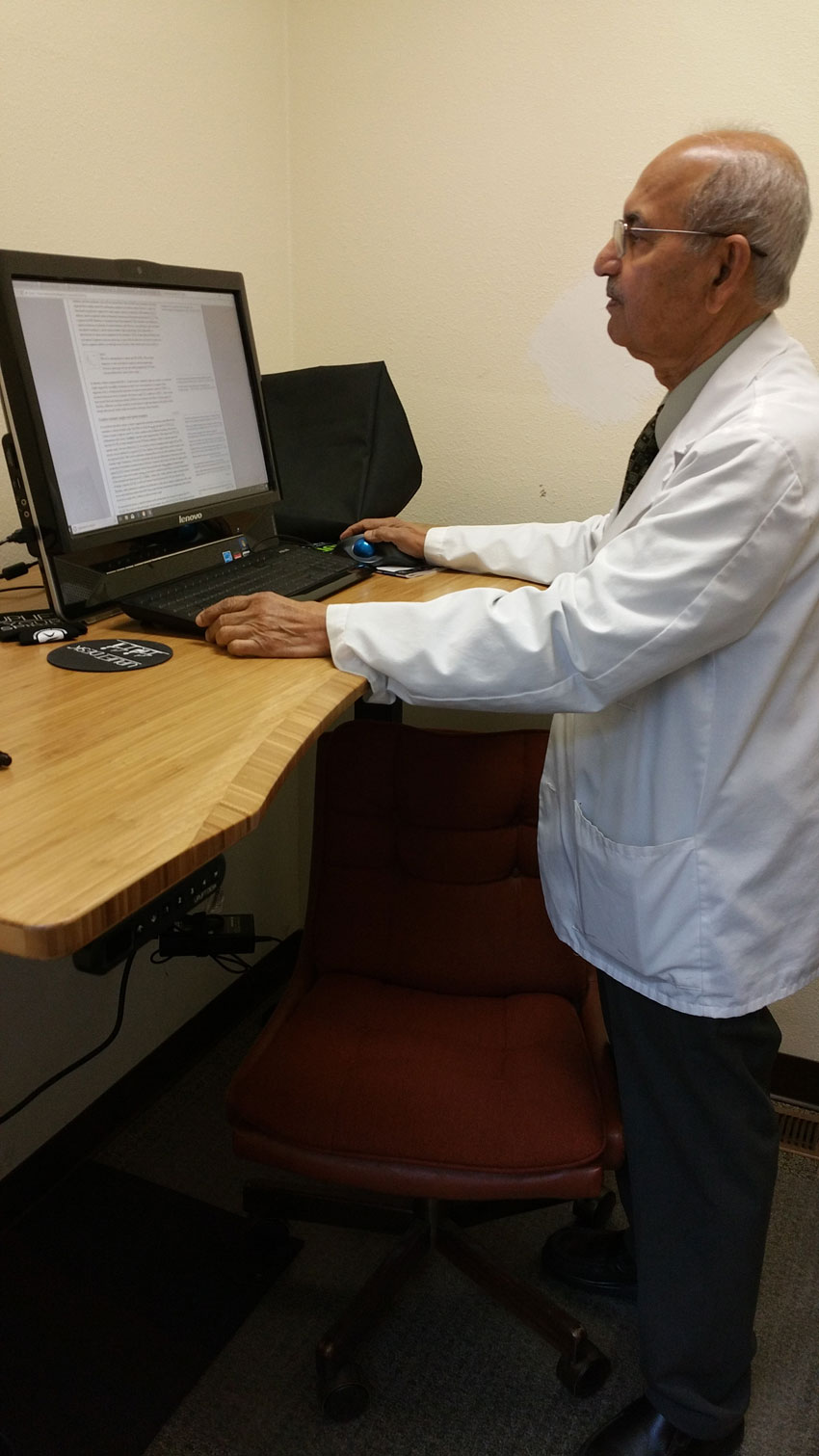Sitting is Dangerous to Your Health, Asserts Bay Area Physician
The next time a guest walks into your home you may want to think twice before telling her to take a seat. You might, instead, say, “Hey, let’s stand and talk for a bit, shall we.” (Prolonged) sitting, warns Dr. Naras Bhat, a doctor of western medicine in the East Bay, is deleterious to your health.
Bay Area Health care reporter Viji Sundaram interviewed him in his clinic in Concord, Calif., on what is now popularly labeled as “the sitting disease.” Bhat half-jestingly calls it the “curse of chairmanship.”
SUNDARAM: You make such statements as ‘for every minute of sitting you do, you shave two minutes off of your life.” Surely you jest?
BHAT: No, it’s true. There are a slew of diseases associated with excess sitting, ranging from heart disease to obesity to stroke to cancer and even dementia. There’s a body of research done on this by people like Dr. James Levine, an endocrinologist at the Mayo Clinic.

SUNDARAM: According to people who have studied this issue, the average American sits for eight to nine hours a day. It’s even worse for people who have desk jobs.
We live here, in the proximity of Silicon Valley, where hundreds of thousands of Indians techies work in the computer industry, staring at their computer screens for hours on end. Are they causing harm to themselves?
BHAT: They put themselves at high risk of contracting what is called metabolic syndrome, which leads to abdominal obesity because a key enzyme that leads to it is rendered inactive by prolonged sitting. It’s more than putting a lot of mush in your tush or developing flabby abs. To put it simply, prolonged sitting changes a person’s metabolism and cardiovascular function. This is one of the key factors in early coronary disease and heart attacks among South Asians.
![]()
It’s no exaggeration when I say that the average Indian American techie sits anywhere from 8 to 10 hours a day, when you add up the time spent on sitting down to breakfast, commuting to work, then sitting at the computer, sitting down to lunch, back to the computer and then back into the car for the commute back home. Once he reaches his house, he sits down for dinner and then plops down in front of the TV for an hour or two. He then ends the day by checking his emails, also seated.
SUNDARAM: Are the risks of prolonged sitting more in one gender than in the other?
BHAT: Yes, women are at greater risk than men, and this is not a chauvinistic statement.
A study done by the American Cancer Society led by epidemiologist Alpa Patel shows that women who sit for more than even six hours a day were at a higher risk for developing a variety of cancers.
Sitting causes fat to deposit around the abdomen, and that’s a toxic fat, according to researchers. Fat cells release a chemical called cytokines that moves to different organs and cause disease.
SUNDARAM: So should we be hitting the gym every day and getting an hour’s worth of good intense exercise?
![]()
BHAT: Unfortunately, it doesn’t work that way, although it’s better to have a daily workout at the gym or out in the open than none at all. The best way to nullify the harmful effects of sitting disease is to move for at least 10 minutes for every hour you sit. It’s called non-exercise movement, as opposed to intentional. Doing that could reverse the bad effects of prolonged sitting.
There are schools in some parts of Europe where all learning is done standing. Research has shown that the more you stand, the more you learn.
SUNDARAM: Could you list some of the things people can do to reverse the harmful effects of sitting disease.
BHAT: We should set a goal of 150 minutes of moving time per day. It’s very doable. Here are things you can do:
- Have a desk that you can raise and lower. That way you can stand and work at the computer, and sit for a while when you feel you need to.
- Get a treadmill desk that lets you do spot walking as you work.
- Stand and eat, but in a leisurely fashion.
- When you sit, let it be active. This means, keep fidgeting.
- Convert TV time to moving time. Walk in the room whenever a commercial comes on.
Here’s my prescription for everyone: Reduce your sitting time by 150 minutes a day during the three key activities: Computer time, phone time and TV time.


